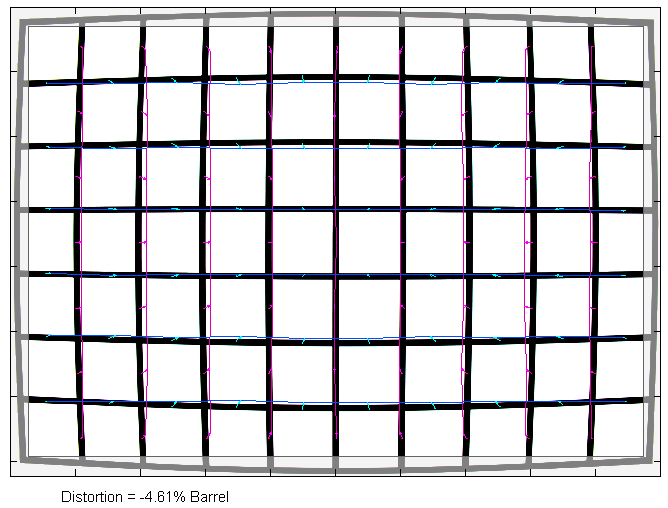|
Fujinon XF 18-55mm f/2.8-4 R LM OIS (Fujifilm) - Review / Test Report - Analysis |
|
Lens Reviews -
Fujifilm X
|
|
Page 2 of 3

Distortion
These days image distortion is usually taken care of by the camera or by RAW converters so from a user perspective there isn't much to worry about there. However, it is still interesting to check the original distortion characteristic - after all the auto-correction is a lossy procedure.
The Fujinon shows a rather massive amount of barrel distortion at the short end (4.6%) so it is a bit under-designed here. Zooming in, the distortion decreases to a slight barrel distortion level at 23mm and a slight pincushion distortion at longer focal lengths.
|
Move the mouse cursor over the focal length text marks below to observe the respective distortions
|
| 18mm |
23mm |
35mm |
55mm |
|

|
Vignetting
Vignetting is another aspect which is usually auto-corrected. In RAW mode - thus with disabled distortion and vignetting compensation - it is a different story. At max. aperture there's a strong light falloff especially at 18mm but also at and beyond 35mm. However, it isn't really an issue anymore when stopping down to f/5.6. Please note that vignetting compensation is also a lossy procedure because it increases the corner (sensor-)noise.

MTF (resolution)
The Fujinon produced very impressive resolution figures in the MTF lab. The center performance is generally excellent except at f/11 where diffraction takes a slight toll. The border quality is easily on a very good level and it even touches excellent levels in the lower zoom range. The extreme corners show no softness at all tested apertures and focal lengths as well. The sweet spot of the lens is at 18mm and the weakest spot is around 35mm - albeit on a very high level.
While the technical figures are impressive at 18mm, we have to note that the lens suffers from a high amount of field curvature at 18mm - the focus plane "bends" towards the front in the image corners making it necessary to stop down quite a bit get everything into focus. Otherwise the corners will be defocused - thus visually soft.
Please note that the MTF results are not directly comparable across the different systems!
Below is a simplified summary of the formal findings. The chart shows line widths
per picture height (LW/PH) which can be taken as a measure for sharpness.
If you want to know more about the MTF50 figures you may check out the corresponding
Imatest Explanations
Chromatic Aberrations (CAs)
Lateral CA (color shadows at the image borders) are well controlled for a standard zoom lens. In the 18-35mm range they stay at or below 1px on the average pixel at the image borders. The CAs increase to 1.6px at 55mm @ f/2.8 but this is still nowhere excessive.

|